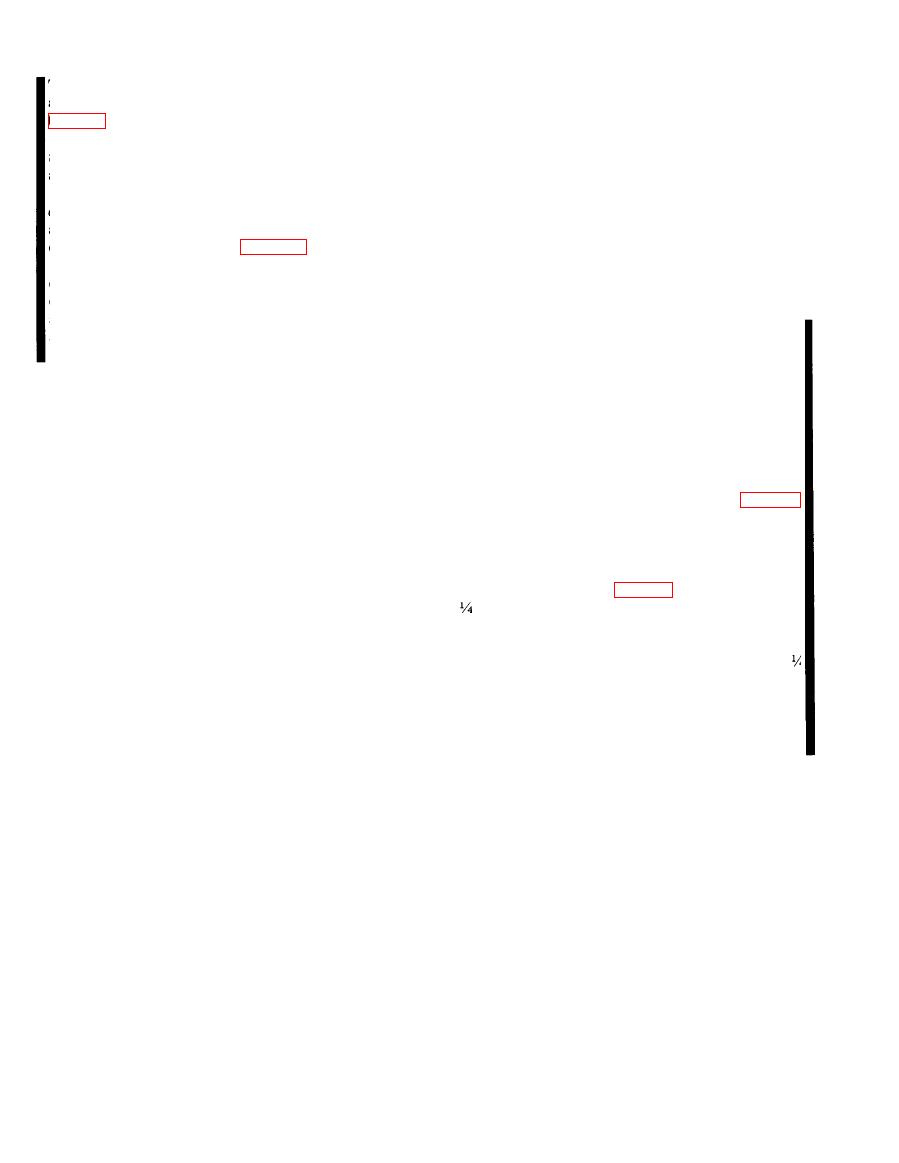 |
|||
|
|
|||
|
Page Title:
Adjustment of Regulated Power Supplies |
|
||
| ||||||||||
|
|  TM 11-6660-204-25
This pressure should be 2 ounces; it is varied by
adjustment of the tension of the pen pressure spring
a. Positive Regulated Power Supply. This unit is
adjusted to give a constant output potential of 300
c. Adjustment to Eliminate Erratic Pen Opera-
volts under normal loads. Connect the positive lead
tion. Erratic operation of the pen may be caused by
of a voltmeter (300-500 volt range) to J404 and the
any one or a combination of the following conditions:
negative lead to chassis. Adjust R412 for a reading of
(1) A loose connection between the drive cable
300 volts.
and the pen carriage. Check visually and/or check the
b. Negative Regulated Power Supply. This unit is
alignment of the pen against the position of the arm
adjusted to give a constant output potential of 175
of the slide and trolley wire (para 3-33).
volts under normal load. Connect the negative lead of
(2) Slackness in the drive cable. If this condition
a voltmeter (300-500 volt range) to J413 and the
exists, increase the tension by turning the setscrew
positive lead to chassis. Adjust R434 for a reading of
on the drive cable guide pulley located on the right
175.
side of the recorder. Turn the setscrew until the
spring is completely compressed, and then back it off
1 full turn.
Noise suppression diode alignment is a direct sup
(3) A worn condition of the traveling trolley con-
port maintenance procedure and requires the use of
tacts. If either one of these is worn half through,
an oscilloscope. However, if a replacement unit is not
replace both of them. Pressure on the new contacts
immediately available, or the situation is such that
should be adjusted to between 1.75 and 2.5 ounces.
equipment cannot be removed from operation for
To adjust the pressure, bend the contact spring as
direct support maintenance, the following procedure
required for a course adjustment. To make the fine
will temporarily provide noise suppression of a noisy
adjustment, loosen, the two screws that hold the
radiosonde signal:
contact arm and slide the arm toward or away from
the contacts, as indicated. While performing these
3-15), to the IN position.
adjustments, turn the small backup screw on the side
b. Use a pencil to mark the position of the slots of
of the contact arm out of the way; after the adjust-
potentiometers R304 and R306.
ment is completed, turn the screw in as far as it will
c. Listen to the speaker and observe the pen. Ad
go and tighten the locknut. Check to see that there is
just potentiometer R306 (fig. 3-15) to the maximum
a minimum of 1/16inch clearance between any part
of turns in each direction and listen to the speaker
of either contact spring and the slide. Also be sure
for a reduction in noise while still maintaining a
that there is adequate clearance between the heads of
steady pen trace.
the screws that hold the contact assembly to the
d. Adjust potentiometer R304 a maximum of
contact arm and the bottom part of the slide-wire
turn in either direction for a reduction in noise while
housing. Rotate the contact arm throughout its en-
still maintaining a steady pen trace.
tire excursion in making this clearance check.
e. If noise cannot be adjusted out by this method
return both potentiometers (R304 and R306) to their
original (as marked) positions.
Change 3
|
|
Privacy Statement - Press Release - Copyright Information. - Contact Us |